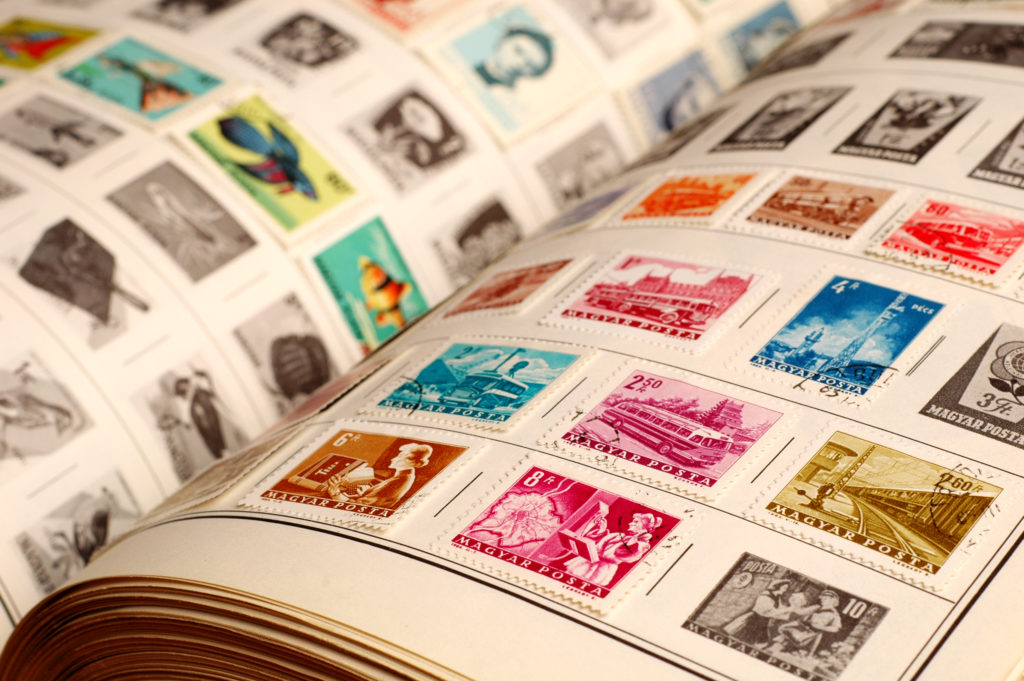
Have you inherited a relative’s stamp collection or passed them in an antique store and wondered what’s up with that? Is it hard to imagine collecting stamps when you may hardly use them yourself? With its heyday in the 1950s, stamp collecting, aka philately, has declined in popularity until recent years. Millennials and others are rediscovering and reinventing stamp collecting as a fun, beautiful, and social media-worthy hobby!
A (Very) Brief History of Stamps and Collecting Them
Before the Victorian era, the person receiving a letter paid the postage. Once the system of senders paying for the postage was launched in the UK with stamps as we think of them today, it rapidly became the accepted system in countries far and wide. Colorful, easy to store, and maintaining their face value at a minimum, stamps became a simple and popular collectible. By the 1950s, collections were extremely common, and packets of a variety of national and international stamps could even be ordered with forms in the backs of comic books. Collections can start very simply with those on received mail (no cost) to extremely expensive, rare stamps at specialist auctions.
What Stamps are Collectible?
That depends. For your own collection? Anything you like! Some people like to collect a certain time period or only from a certain country. Others try to get full sets of different issues such as one of the sets of all 50 state birds or flower stamps. Still others seek out themed stamps such as those with flowers, or a particular color, birds, or unusually shaped stamps.
Value plays a role for some collectors who seek out the more rare or unusual (and thus more valuable) stamps. These can include:
- First Day Covers – special, illustrated envelopes with the related stamp and a cancellation mark for the day the stamp was issued
- Misprints – stamps with errors such as upside-down images, misspellings, double-strike prints, unusual colors, and similar printing problems
- Postmarks – special cancellations, those from some specific time periods, and others can be highly sought after
- Plate Blocks – a section of a set of intact stamps from a sheet which shows how they were printed, often collected as corner blocks
- Rare, Named Stamps – Some stamps are so rare and collectible, they have their own descriptive names such as the famous “Inverted Jenny” or “Treskilling Yellow”
How Do I Start Collecting Stamps?
The best way to start is to look at a lot of stamps! Browse old letters in an antique store, look around online, buy some variety packs from a stamp dealer and look through them. Store your stamps in glassine (like wax paper but DON’T substitute that!) envelopes or in albums (a “hingeless mount” protective sleeve will save your stamps from damage). Of course, keep your stamps away from moisture and heat.
Don’t be afraid to start collecting stamps. After all, it’s a relaxing, fun hobby that might net you some intriguing and valuable finds.